Accidents happen, often catching us off guard, and the way we respond can significantly influence their repercussions. Deft handling of these unforeseen circumstances begins with a well-documented Accident Report Form.
A step we’ll delve into in this enlightening article, underscoring the how-tos, significance, and components of this tool. We aim to enhance your understanding and equip you with knowledge to foster a safer, more accountable workspace.
Table of Contents
What is an accident report form?

An Accident Report Form is a document used to record the details of an accident, typically occurring in a workplace or other organized setting. This form is vital for capturing comprehensive information about the incident, including where and when it happened, the people involved, any injuries sustained, and the events leading up to the accident.
It often includes witness testimonies and can be accompanied by photos or diagrams for clarity. This documented record is crucial for investigating the incident, identifying the cause, implementing corrective actions, and potentially preventing similar future accidents. It also serves as a legal record that can be used in insurance claims or liability determinations.
Accident Report Form Templates
An Accident Report Form Template is an essential document used to record incidents, mishaps, injuries, or near misses at a workplace or other settings. It serves as a standardized method of capturing data related to accidents, facilitating a streamlined process for information gathering, analysis, and reporting.
Starting from the top, the form often begins with the general information about the incident. This includes the date and time of the accident, the location where it occurred, and details about the weather conditions if relevant. It helps to establish a precise context in which the accident took place.
Following this section, there’s usually a field designated for the parties involved in the incident. Here, information like names, addresses, contact details, and role at the site (such as employee, visitor, contractor) of those involved are recorded. This section provides vital details about who was affected or involved in the incident.
When do you need an accident report form ?
An Accident Report Form is required whenever there’s an accident or a significant safety incident. This could include, but is not limited to, workplace accidents, incidents in a public or private place, or during a school activity. The form should be completed as soon as possible after the incident occurs to ensure all details are fresh and accurately captured. It is necessary not just for serious accidents involving injuries or property damage, but also for near-misses, where an accident was narrowly avoided.
By documenting these incidents, organizations can identify potential hazards or unsafe practices and take necessary steps to prevent actual accidents in the future. Furthermore, completing an Accident Report Form is often a legal requirement, particularly in workplace settings, to ensure compliance with health and safety regulations and for insurance purposes.
Types of Accident Report Form
Accident report forms are crucial in many scenarios. They are often used in workplaces, schools, and by insurance companies to record details about incidents that lead to injury or property damage. Accident report forms come in several different types, depending on the context of the incident.
Here’s a detailed guide to the types of accident report forms:
Workplace Accident Report Form: This is typically used to document any incident that occurs in a workplace. They are crucial for workers’ compensation claims and for identifying safety issues that need to be addressed. The form usually includes details like the date and time of the incident, the parties involved, a description of the incident, the nature of injuries or damages, and any immediate action taken.
Vehicle Accident Report Form: This is used when there’s an automobile accident. The form is typically completed by the driver(s) involved or a law enforcement officer. It captures details like the date, time, and location of the accident, parties involved, a description of what happened, the nature of injuries or damages, any witnesses, and often includes a diagram to draw the incident.
Incident/Accident Investigation Report Form: This form is used after an incident to perform a more thorough investigation into what occurred. It is often used in workplaces but can be utilized in any situation that requires a more detailed analysis. It can help identify the root cause of the accident and propose preventive measures. This form includes a more comprehensive set of details, such as sequences of events, factors contributing to the accident, any non-compliance with standard procedures, and recommendations to prevent future incidents.
General Accident Report Form: This is a universal form that can be used to document any type of accident, not just those occurring in the workplace or involving vehicles. It is more comprehensive, including information about the parties involved, what happened, when and where the incident occurred, the extent of any injuries or damage, and any other relevant details.
School Accident Report Form: Used in educational institutions, this form records accidents involving students. It generally includes details like the student’s name, grade level, accident location, description of the accident, type of injury, and any immediate medical action taken.
Public Liability Accident Report Form: These are typically used when an accident occurs in a public place or involves a business’s liability, such as a customer slipping and falling in a store. It contains details of the accident, the involved parties, witnesses, and the type and extent of the injuries.
Key components of an effective accident report form
Creating an effective accident report form is essential in order to accurately record the events surrounding an accident. It helps to determine the cause of the accident, identify preventive measures, and provides a formal record of the incident. Here are the key elements that should be included:
- Heading/Title: It should clearly state that the document is an accident report form. It can also specify the type of accident if applicable, e.g., “Workplace Accident Report Form.”
- Details of the Reporting Person: This includes the name, position, and contact information of the person reporting the accident.
- Details of the Accident:
- Date and Time of Accident: The exact date and time when the accident happened.
- Location of Accident: The specific location where the accident occurred. If it’s a large area or building, provide details about the exact spot within that location.
- Description of Accident: A detailed narrative of how the accident occurred. It should include the events leading up to the accident, the accident itself, and events immediately following the accident.
- Details of the Person(s) Involved: This includes the name(s), age(s), contact information, and their role(s) at the time of the accident (e.g., employee, customer, passerby).
- Details of Injury/Damage:
- Type and Extent of Injury: Describe the injuries sustained by those involved, as well as the severity of those injuries.
- Property Damage: Details of any property that was damaged in the accident.
- Witness Details: Names and contact details of any witnesses to the accident. Include their statements or a space for them to provide written statements.
- Immediate Actions Taken: Detail what actions were taken immediately after the accident, including first aid or emergency services called.
- Incident Diagram: A space for sketching the scene of the accident. This is particularly useful for vehicle accidents but can be beneficial in other scenarios as well.
- Photographic Evidence: If possible, include photographs of the accident scene, the injuries sustained, and property damage.
- Follow-Up Actions: Specify any measures taken after the incident, such as investigations, consultations, changes in policy or procedure, etc.
- Signature Line: A line for the signature of the reporting person and the date, affirming that the details provided are accurate to the best of their knowledge. Also, consider including a line for a supervisor or manager’s signature after reviewing the report.
- Privacy Statement: A statement about how the information provided will be used and stored, as well as assurances of privacy. This is particularly important due to personal data protection laws.
How to write an accident report form?
Writing an accident report is an essential skill, as it helps capture accurate information about the incident for future reference, investigation, or legal purposes. Here’s a step-by-step guide on how to write an accident report:
- Immediate Action: As soon as the accident occurs, ensure that everyone is safe and call for medical help if necessary. Once the immediate situation is under control, start gathering information.
- Gather Information: Gather all the information you will need for your report. This includes details about when and where the accident took place, who was involved, what injuries or damages occurred, and who witnessed the event. Take photographs of the scene if possible.
- Start Writing the Report: Begin the report with a clear title or heading, such as “Accident Report.” Make sure to include the date, time, and location of the accident.
- Describe the Incident: Write a detailed description of the accident. Be factual and avoid speculation or opinion. The description should be clear, concise, and include the sequence of events leading up to the accident, the accident itself, and what happened immediately after. Remember to write in third-person narrative.
- Details of Involved Parties: Include the names and any other relevant information of all individuals involved in the accident. This includes victims, witnesses, and anyone else who was present. Be sure to specify their roles (for instance, worker, supervisor, pedestrian, etc.).
- Document the Injuries or Damage: Describe any injuries or damages that occurred as a result of the accident. Include as much detail as possible, such as the type of injury, the severity, and the part of the body injured. If property was damaged, describe the extent and nature of the damage.
- Include Witness Statements: If there were any witnesses to the accident, include their statements in the report. These can be very valuable in determining exactly what happened. Remember to include their contact details as well.
- Outline Any Immediate Action Taken: Describe any actions that were taken immediately following the accident. This could include first aid provided, emergency services called, evacuations, etc.
- Note Any Contributing Factors: Note any conditions or factors that might have contributed to the accident, such as weather conditions, lighting, equipment failure, etc.
- Recommendations: Based on your understanding of the accident and its causes, provide recommendations to prevent a similar incident from happening in the future.
- Finalize the Report: Review the report to ensure it’s accurate and complete. Correct any errors or omissions. Once finished, sign and date the report, indicating that the information you’ve provided is true to the best of your knowledge.
- Submit the Report: Submit the accident report to the appropriate authority, whether it’s your supervisor, the safety officer, human resources, or another designated individual or department.
How to fill out an accident report form ?
Filling out an accident report form is a crucial task in the aftermath of an accident. It requires attention to detail and accuracy to ensure that all the relevant information is recorded. Here’s a step-by-step guide on how to fill out an accident report form:
- Identify the Type of Form: First, you’ll need to identify which type of accident report form you’re filling out. It might be a general accident report form, a workplace incident form, a school accident form, etc. Each type will have slightly different requirements.
- Provide Personal Information: At the top of the form, you’ll usually find a section for personal information. This typically includes your name, address, phone number, and other relevant contact details.
- Details of the Incident: This section is where you’ll provide details about the accident itself. This usually includes:
- Date and Time: Write the exact date and time of the accident.
- Location: Specify where the accident occurred, and be as detailed as possible.
- Describe the Accident: In this section, provide a detailed account of what happened. Include all relevant details, such as what you were doing at the time of the accident, the sequence of events leading up to the accident, and any other relevant information.
- Identify Other Involved Parties: Write down the details of any other people involved in the accident. This may include their contact information and a brief description of their involvement.
- Witnesses: If there were any witnesses to the accident, include their names and contact information. Their statements can be very useful in determining what happened.
- Injuries and Damages: Document any injuries or damages that resulted from the accident. Include details about where and how the injury occurred, the severity of the injury, and any medical treatment that was administered. If there was any damage to property, describe the extent and nature of the damage.
- Immediate Actions Taken: Describe any immediate actions taken in response to the accident. This could include first aid, calling emergency services, evacuating the area, etc.
- Evidence: If there’s space on the form and if possible, sketch a diagram of the accident or attach photos. This visual evidence can help others understand exactly what happened.
- Signature and Date: Once you’ve filled out all sections of the form to the best of your ability, sign and date the form. This attests that the information you’ve provided is true to the best of your knowledge.
- Submission: Submit the completed form to the appropriate authority or department. This might be your supervisor, HR department, school administration, or insurance company.
Conclusion
In conclusion, an Accident Report Form plays a pivotal role in documenting incidents meticulously, ensuring all relevant details are recorded for future reference, analysis, and action. It assists in identifying the circumstances and factors contributing to an accident, aids in pinpointing liabilities, and most importantly, helps formulate strategies to prevent similar incidents in the future.
Completing the form accurately and promptly is of utmost importance, as it not only creates a safer environment by encouraging preventive measures but also serves as a valuable tool in legal, insurance, and administrative contexts. This tool’s effectiveness, however, relies heavily on the precision, objectivity, and thoroughness of the information provided. Therefore, the process of completing an Accident Report Form should be approached with care, attention to detail, and a commitment to truthfulness.
FAQs
Who is responsible for completing an Accident Report Form?
The responsibility of completing an Accident Report Form typically falls on the person who witnessed or was involved in the accident. This could include employees, supervisors, or any other individual who can provide accurate information about the incident.
Where can I obtain an Accident Report Form?
Accident Report Forms can often be obtained from your employer, organization, or institution’s human resources department, safety officer, or administrative staff. They may also be available online through official websites or relevant regulatory agencies.
Are Accident Report Forms confidential?
Accident Report Forms are generally considered confidential documents. They contain sensitive information related to accidents, injuries, and individuals involved. Access to these forms is typically restricted to authorized personnel, such as supervisors, safety officers, HR personnel, and legal representatives. However, confidentiality policies may vary depending on organizational practices and local regulations.
What should I do after completing an Accident Report Form?
After completing an Accident Report Form, you should ensure that it is submitted to the appropriate person or department within your organization, such as the HR department or safety officer. It is essential to follow any specific procedures or guidelines set by your organization regarding the submission and handling of accident reports.
Can an Accident Report Form be used for insurance claims?
Yes, an Accident Report Form is often used as supporting documentation for insurance claims. Insurance companies may request a copy of the accident report to assess the circumstances surrounding the incident and determine liability. Providing a detailed and accurate Accident Report Form can help streamline the insurance claims process.
Can an Accident Report Form be used in legal proceedings?
Yes, an Accident Report Form can be used as evidence in legal proceedings related to an accident. In situations where legal action is taken, the Accident Report Form can provide a factual account of the incident and support the claims or defenses of the involved parties. It is important to consult legal professionals for guidance on how to handle accident reports in the context of legal proceedings.
Can an Accident Report Form be used for statistical analysis?
Yes, Accident Report Forms are valuable for statistical analysis. By aggregating and analyzing the data from these forms, organizations can identify trends, recurring hazards, or areas that require improvement. Statistical analysis helps in developing preventive measures, safety training programs, and implementing necessary changes to minimize accidents and ensure a safer environment.








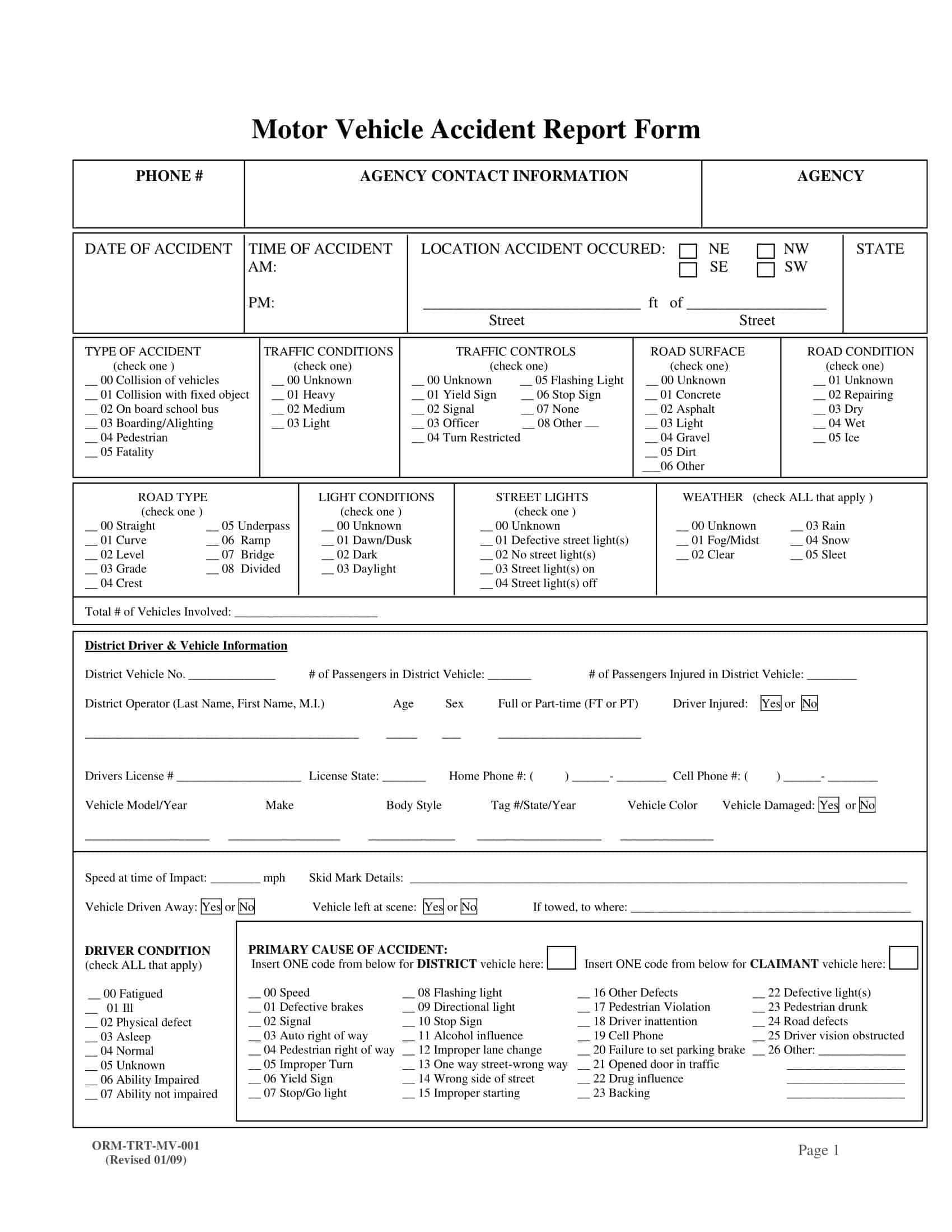

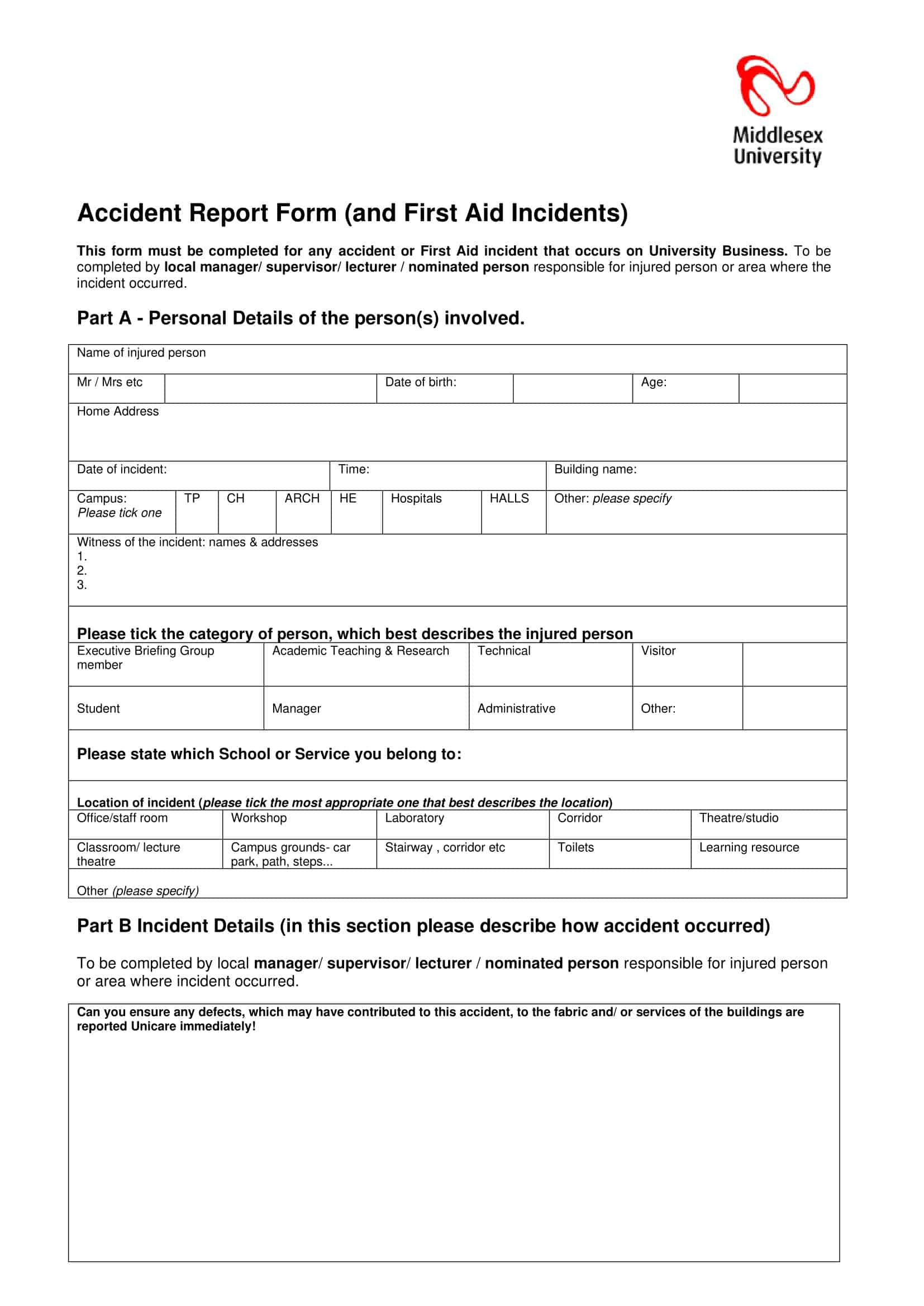


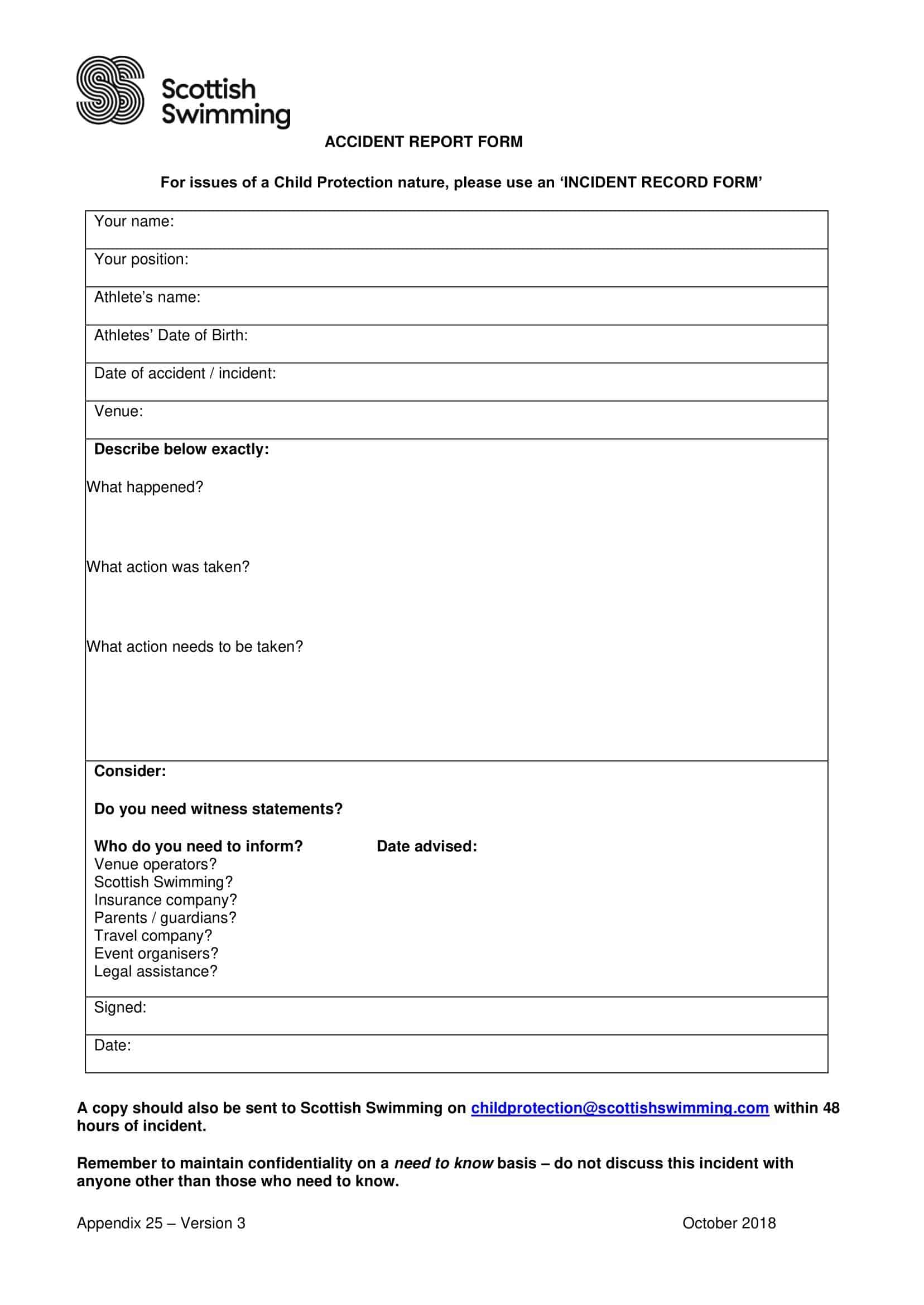





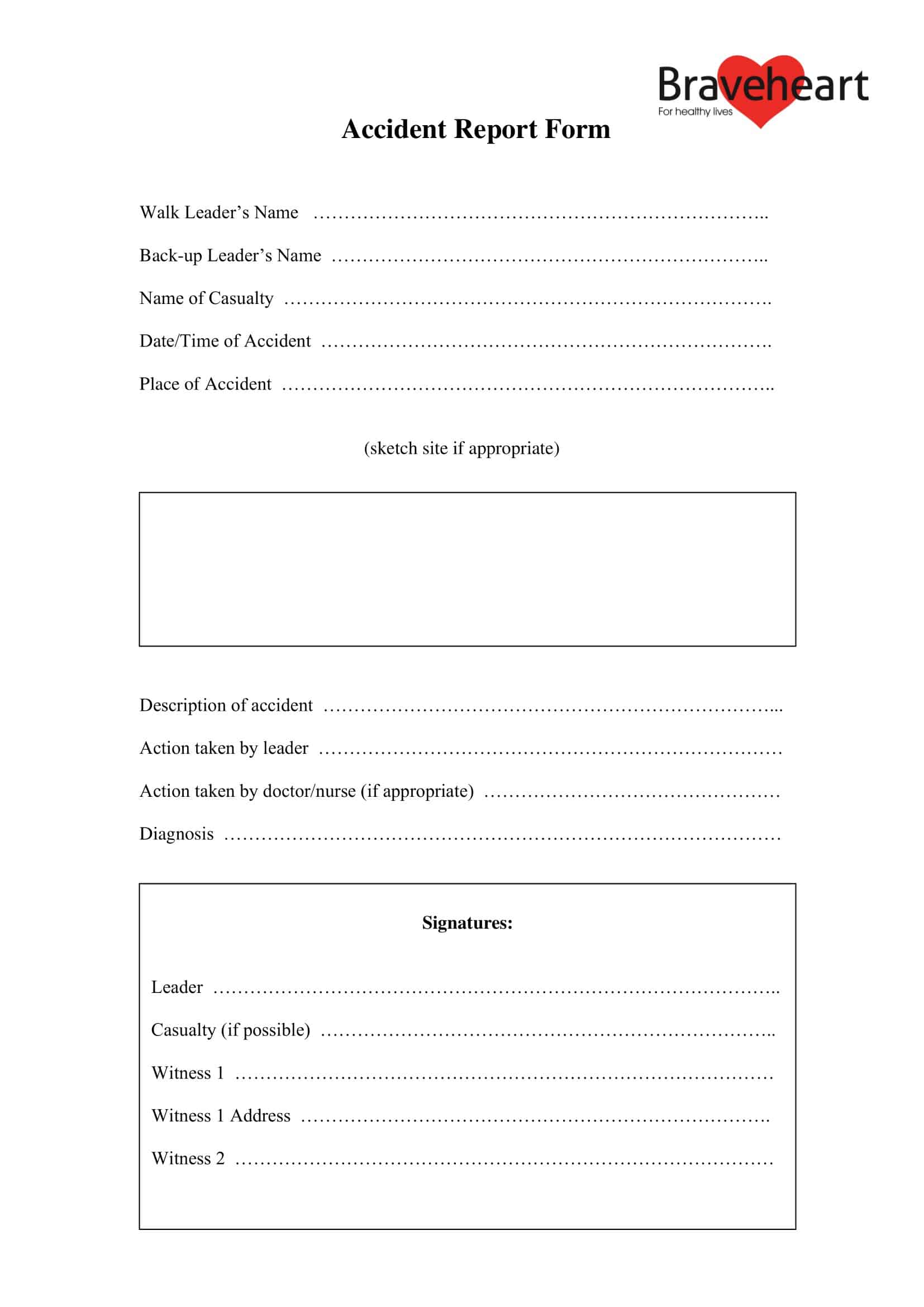






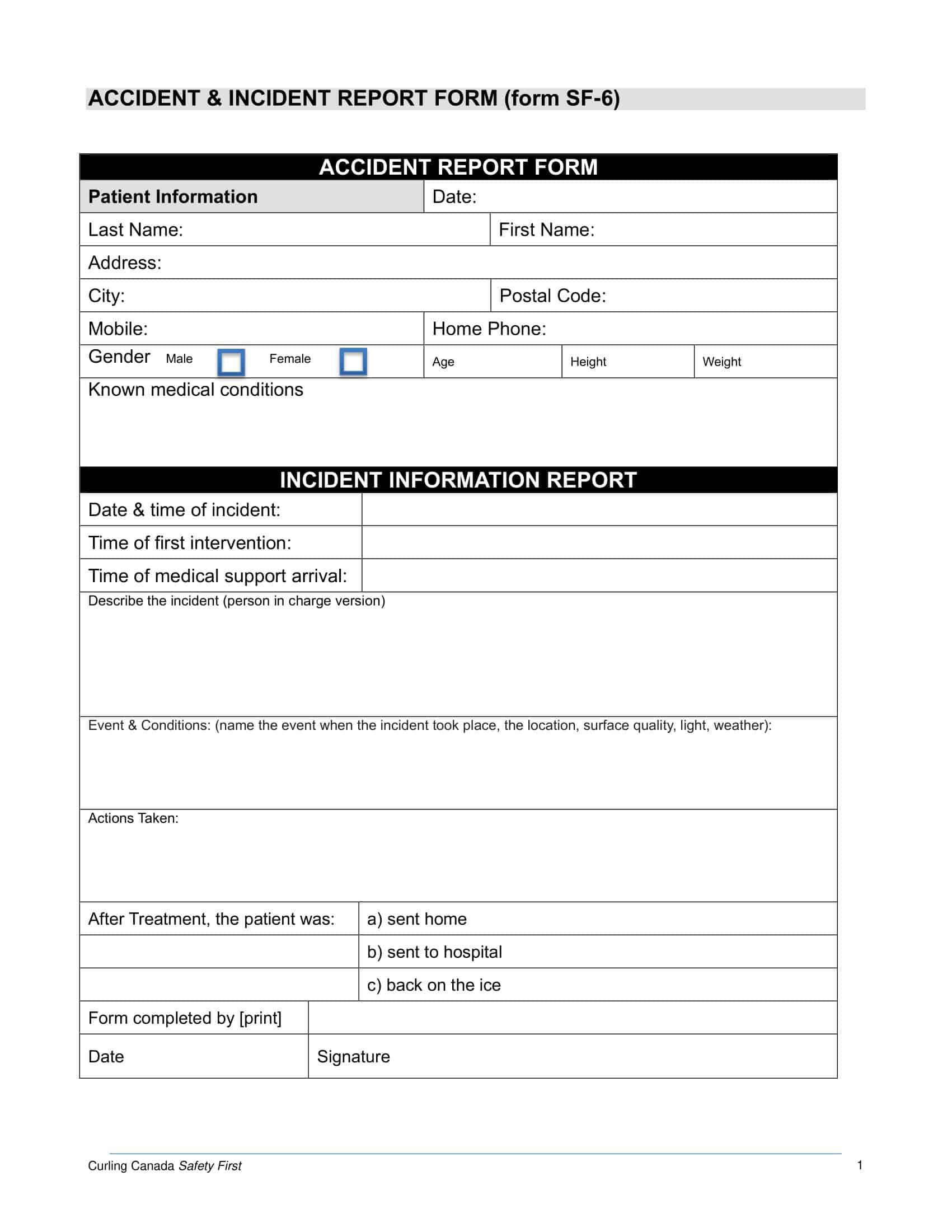






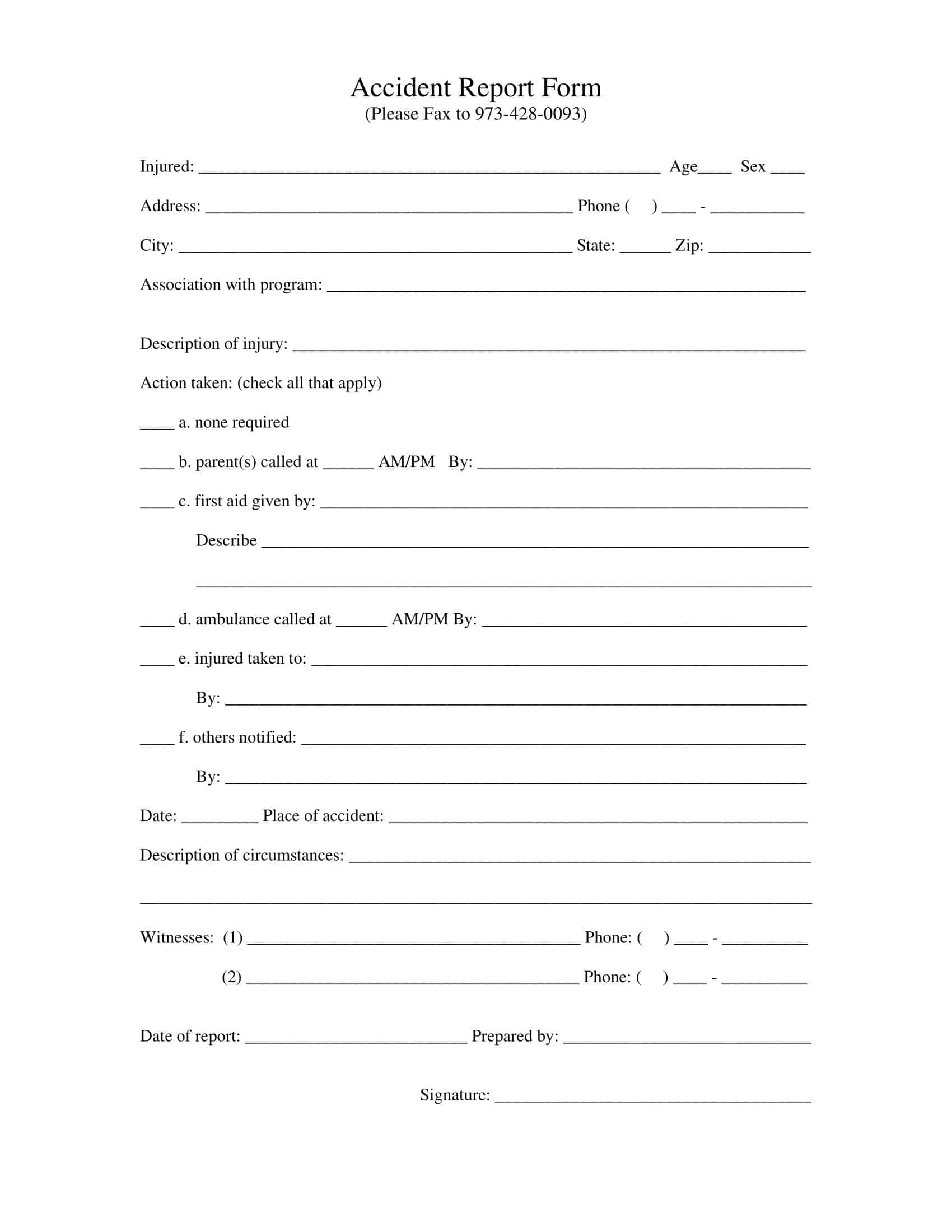
















![Free Printable Location Release Form Templates [PDF, Word] Property / Example 1 Location Release Form](https://www.typecalendar.com/wp-content/uploads/2023/05/Location-Release-Form-1-150x150.jpg)
![Free Printable Annual Report Design Templates [PDF, Excel] 2 Annual Report](https://www.typecalendar.com/wp-content/uploads/2022/11/Annual-Report-150x150.jpg 150w, https://www.typecalendar.com/wp-content/uploads/2022/11/Annual-Report-120x120.jpg 120w, https://www.typecalendar.com/wp-content/uploads/2022/11/Annual-Report-1200x1200.jpg 1200w)
![Free Printable Talent Release Form Templates [PDF, Word, Excel] 3 Talent Release Form](https://www.typecalendar.com/wp-content/uploads/2023/05/Talent-Release-Form-1-150x150.jpg)
